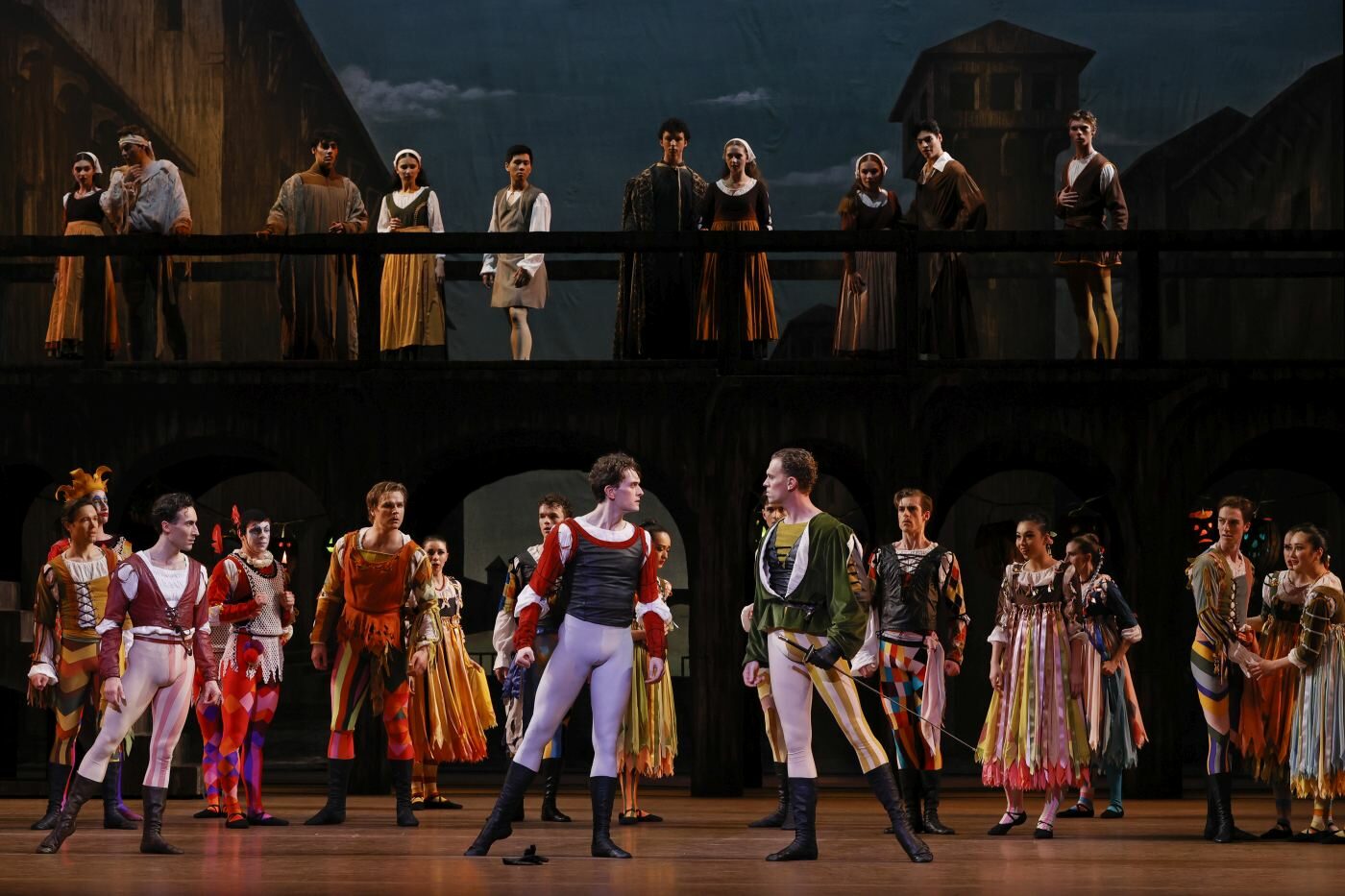“Nicholas Roerich”
New Tretyakov Gallery
Moscow, Russia
November 2023
by Ilona Landgraf
Copyright © 2023 by Ilona Landgraf
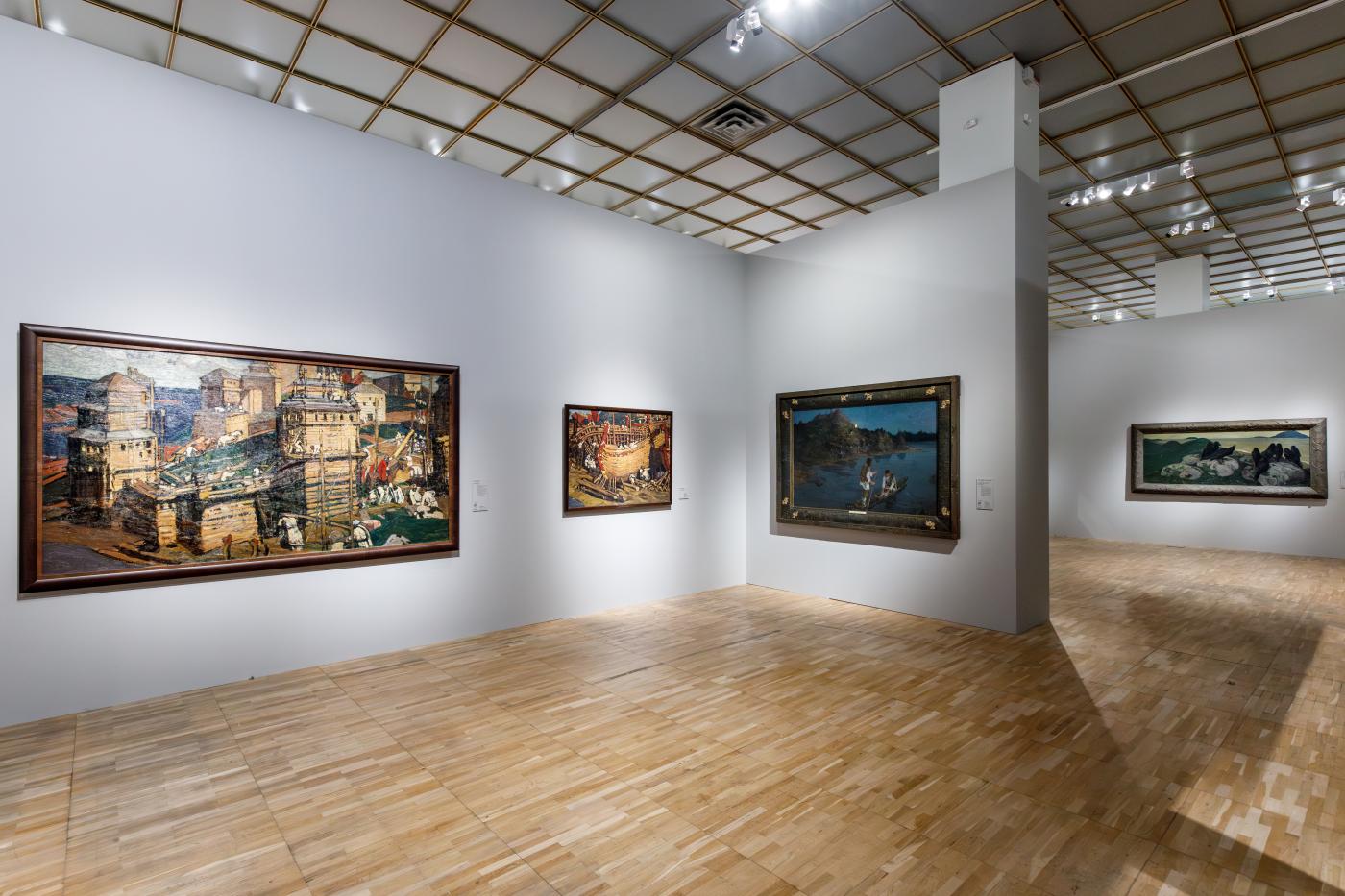 “Have you ever crossed a rapidly flowing river in a boat? It is always necessary to steer higher than the spot towards which you are headed, otherwise you will be taken downstream. So, too, in the sphere of moral demands it is always necessary to steer higher – life takes everything downstream. Let your messenger hold the helm high, then he’ll reach his destination.”
“Have you ever crossed a rapidly flowing river in a boat? It is always necessary to steer higher than the spot towards which you are headed, otherwise you will be taken downstream. So, too, in the sphere of moral demands it is always necessary to steer higher – life takes everything downstream. Let your messenger hold the helm high, then he’ll reach his destination.”
Such was Tolstoy’s comment regarding the painting The Messenger: Tribe Has Risen Against Tribe (1897), a graduation work at St. Petersburg’s Imperial Academy of Arts submitted by twenty-three-year-old Nicholas Roerich (1874 – 1947). It depicts an old messenger sitting in a wooden boat next to an oarsman. The messenger’s stooped shoulders and downcast gaze suggest that he’s delivering bad news. In the distance, a Slavic settlement is outlined against the night sky. Sergei Diaghilev, in his review of the graduation works for the newspaper Novosti, called The Messenger one of the most interesting works in the exhibition, and it was one of three in total the collector Pavel Tretyakov chose for his Moscow gallery. The Messenger is one of the highlights of the Tretyakov Gallery’s current “Nicholas Roerich” exhibition, which celebrates the artist’s 150th anniversary.
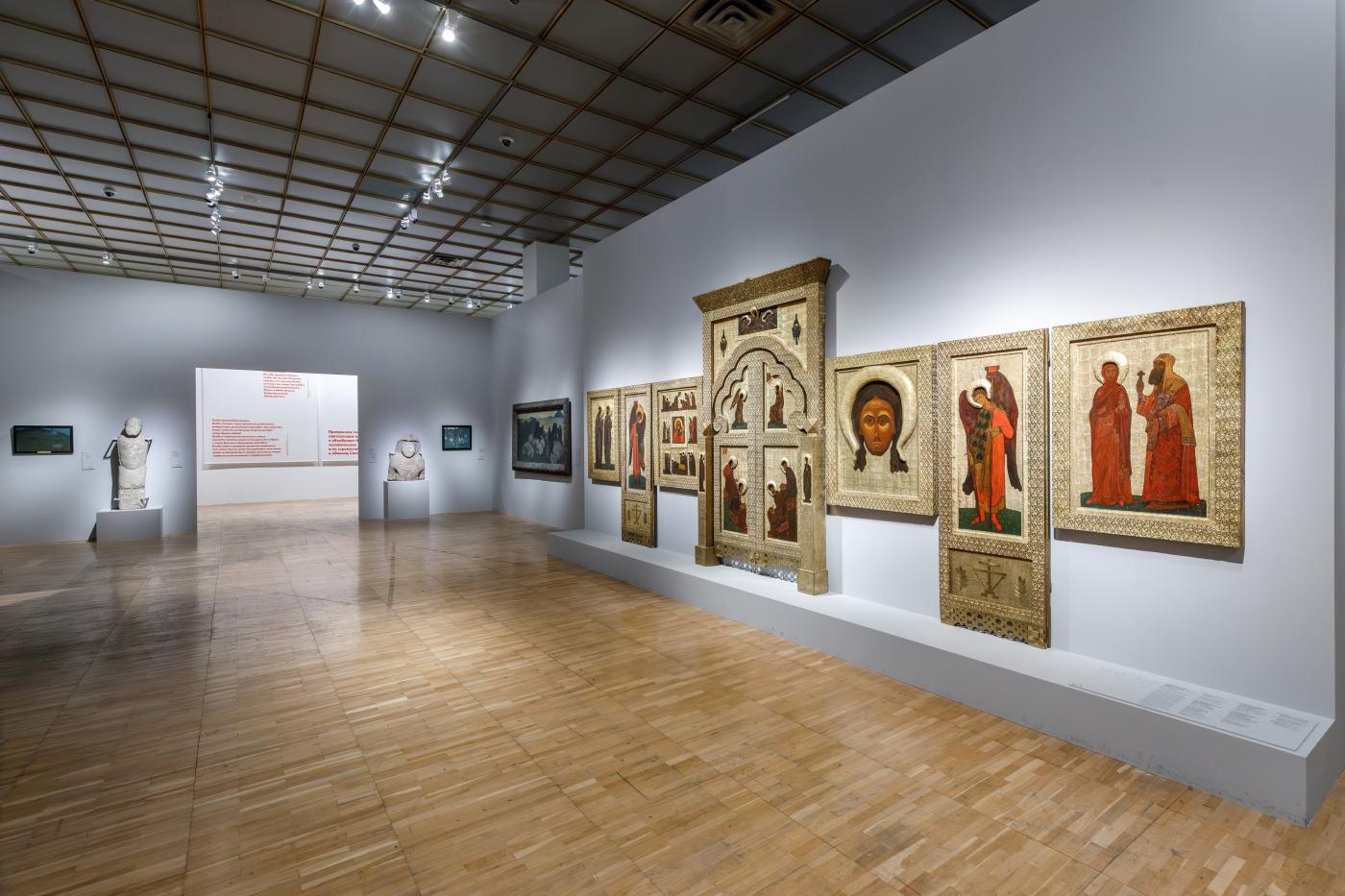 Roerich was a man of many talents. He worked as a painter, writer, stage and set designer, philosopher, archeologist, and theosophist. He traveled frequently due to a keen desire to explore, but also because of health issues. Whether the October Revolution or Roerich’s declining health forced him and his family to emigrate from their Russian homeland to Finland in 1918 has been controversially discussed. In 1919, an invitation from Diaghilev instigated a continuation of their journey to England. Upon completion of the designs for Prince Igor for Diaghilev and Tsar Saltan, The Snow Maiden, and Sadko for Sir Thomas Beecham, Roerich was invited to tour with his art in the U.S. In late 1923, he set off on his first expedition to the East. The five-year journey, which took him through India and most of Central Asia, wasn’t without peril. In 1927, for example, Roerich’s caravan was forced to set up camp on Tibet’s Chantang plateau – the coldest place in Asia – for five months. The party was only equipped with summer tents when winter set in. Temperatures fell to Arctic levels; several guards and attendants and the majority of their animals died.
Roerich was a man of many talents. He worked as a painter, writer, stage and set designer, philosopher, archeologist, and theosophist. He traveled frequently due to a keen desire to explore, but also because of health issues. Whether the October Revolution or Roerich’s declining health forced him and his family to emigrate from their Russian homeland to Finland in 1918 has been controversially discussed. In 1919, an invitation from Diaghilev instigated a continuation of their journey to England. Upon completion of the designs for Prince Igor for Diaghilev and Tsar Saltan, The Snow Maiden, and Sadko for Sir Thomas Beecham, Roerich was invited to tour with his art in the U.S. In late 1923, he set off on his first expedition to the East. The five-year journey, which took him through India and most of Central Asia, wasn’t without peril. In 1927, for example, Roerich’s caravan was forced to set up camp on Tibet’s Chantang plateau – the coldest place in Asia – for five months. The party was only equipped with summer tents when winter set in. Temperatures fell to Arctic levels; several guards and attendants and the majority of their animals died.
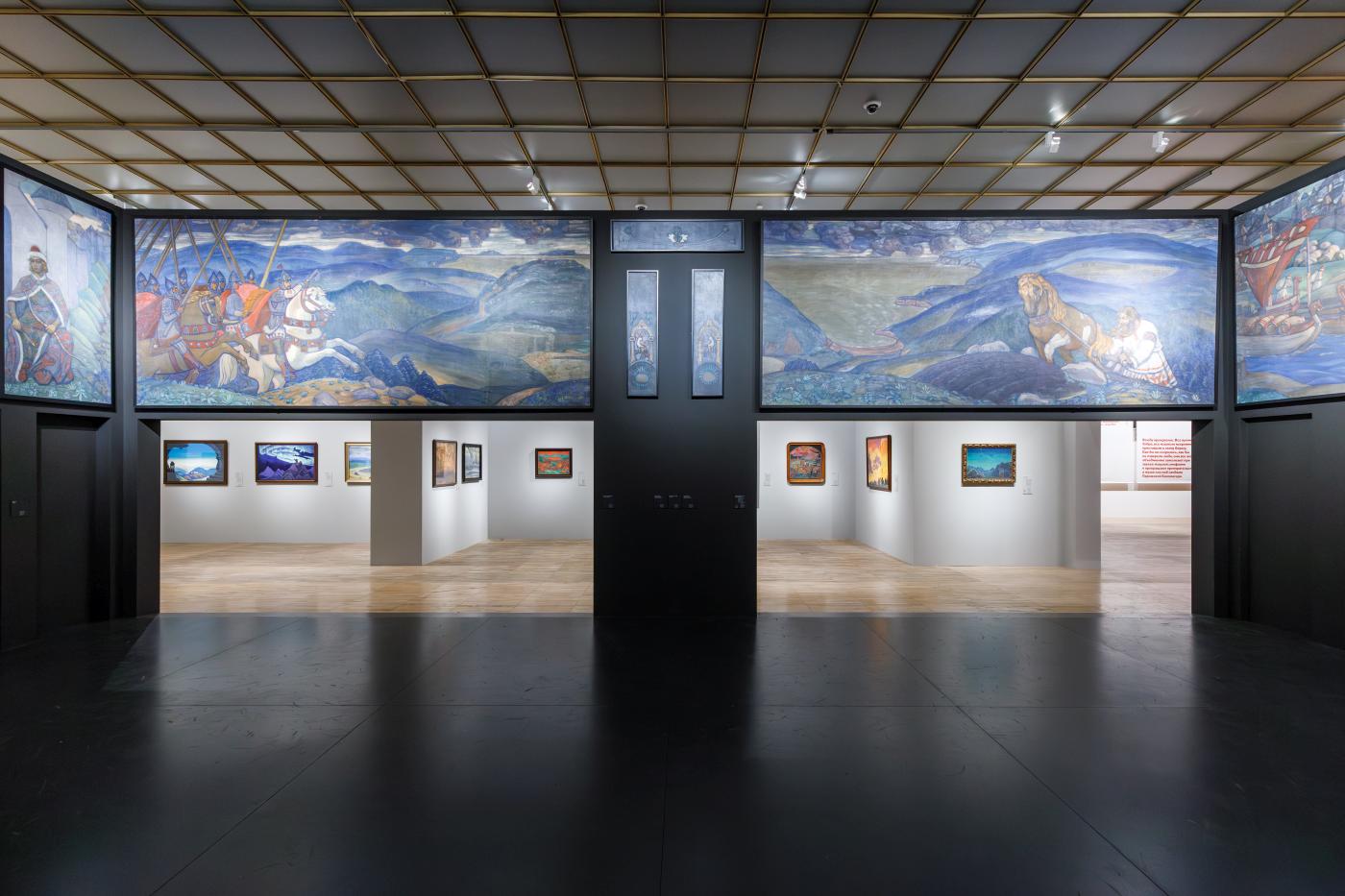
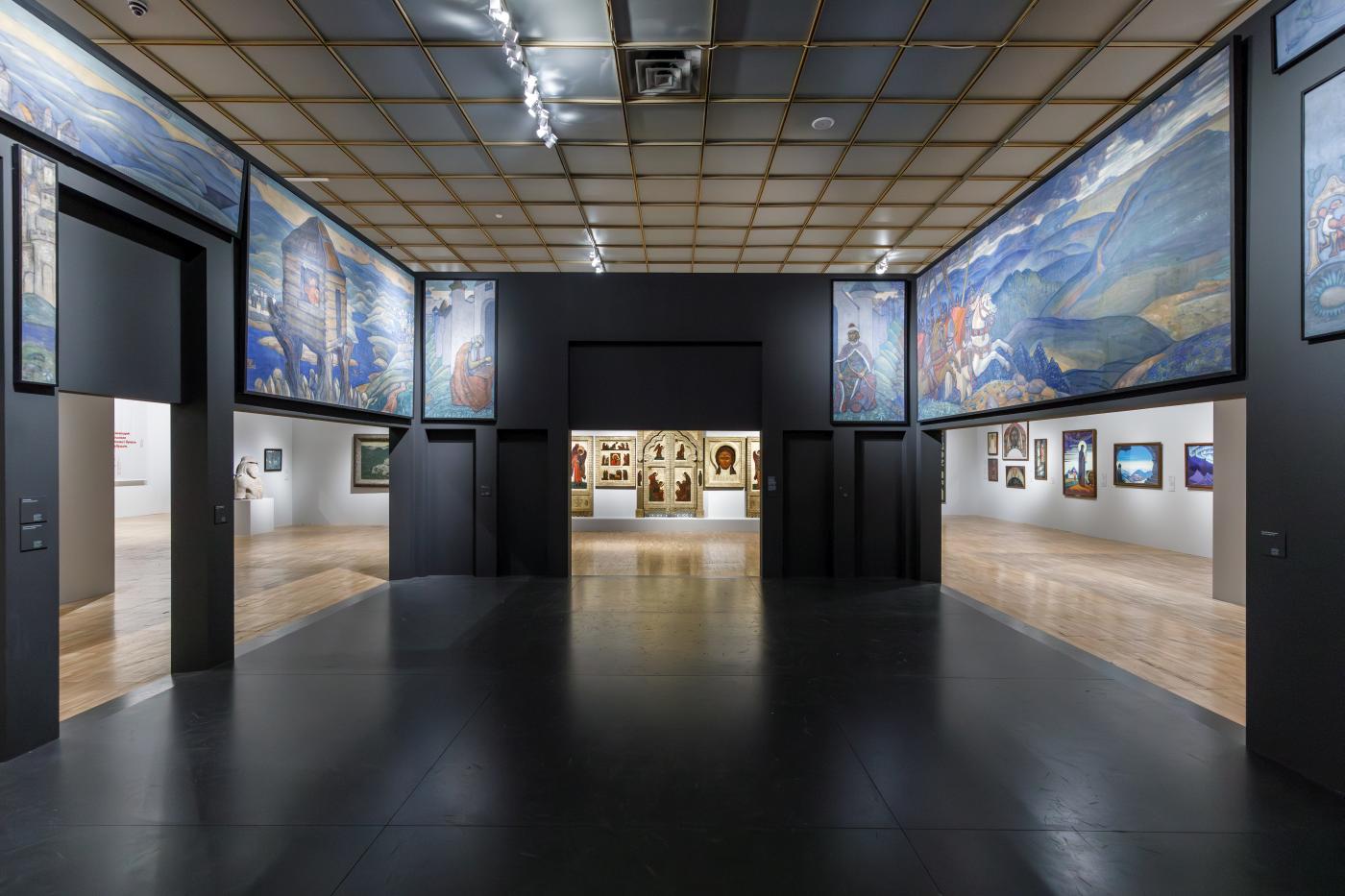 This didn’t prevent Roerich from embarking on a second expedition to Inner Mongolia, Manchuria, and China in 1934. During both tours, Roerich completed hundreds of paintings and gathered cultural and archeological knowledge. Above all though, he furthered his spiritual growth. When not traveling, the Roerichs spent their time in Kulu in the western Himalayas where the family had taken up permanent residence. From there, Roerich watched the horror of WWII unfold. Declining health thwarted his return to Russia. In December 1947, Nicholas Roerich died of heart failure.
This didn’t prevent Roerich from embarking on a second expedition to Inner Mongolia, Manchuria, and China in 1934. During both tours, Roerich completed hundreds of paintings and gathered cultural and archeological knowledge. Above all though, he furthered his spiritual growth. When not traveling, the Roerichs spent their time in Kulu in the western Himalayas where the family had taken up permanent residence. From there, Roerich watched the horror of WWII unfold. Declining health thwarted his return to Russia. In December 1947, Nicholas Roerich died of heart failure.
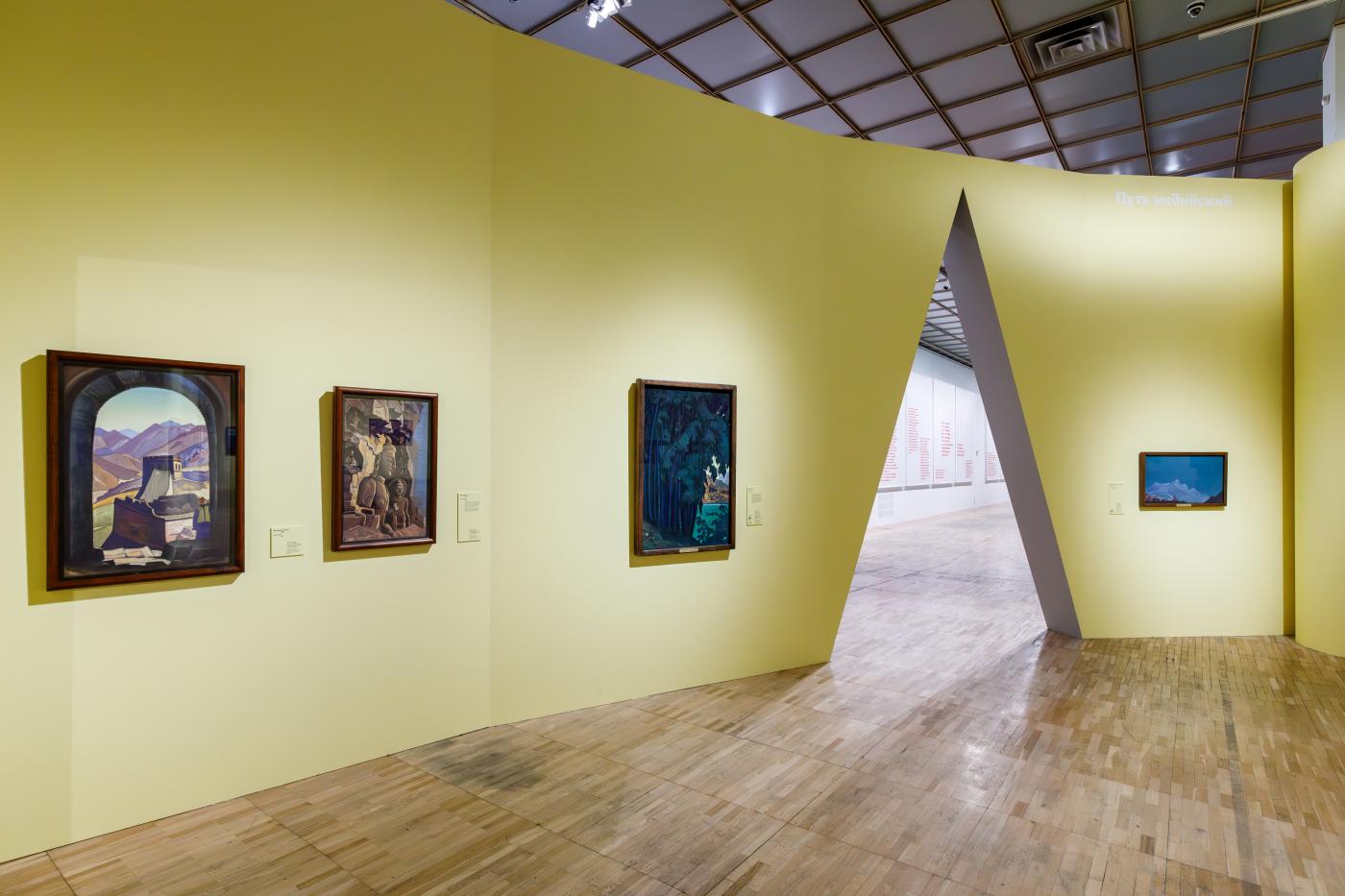
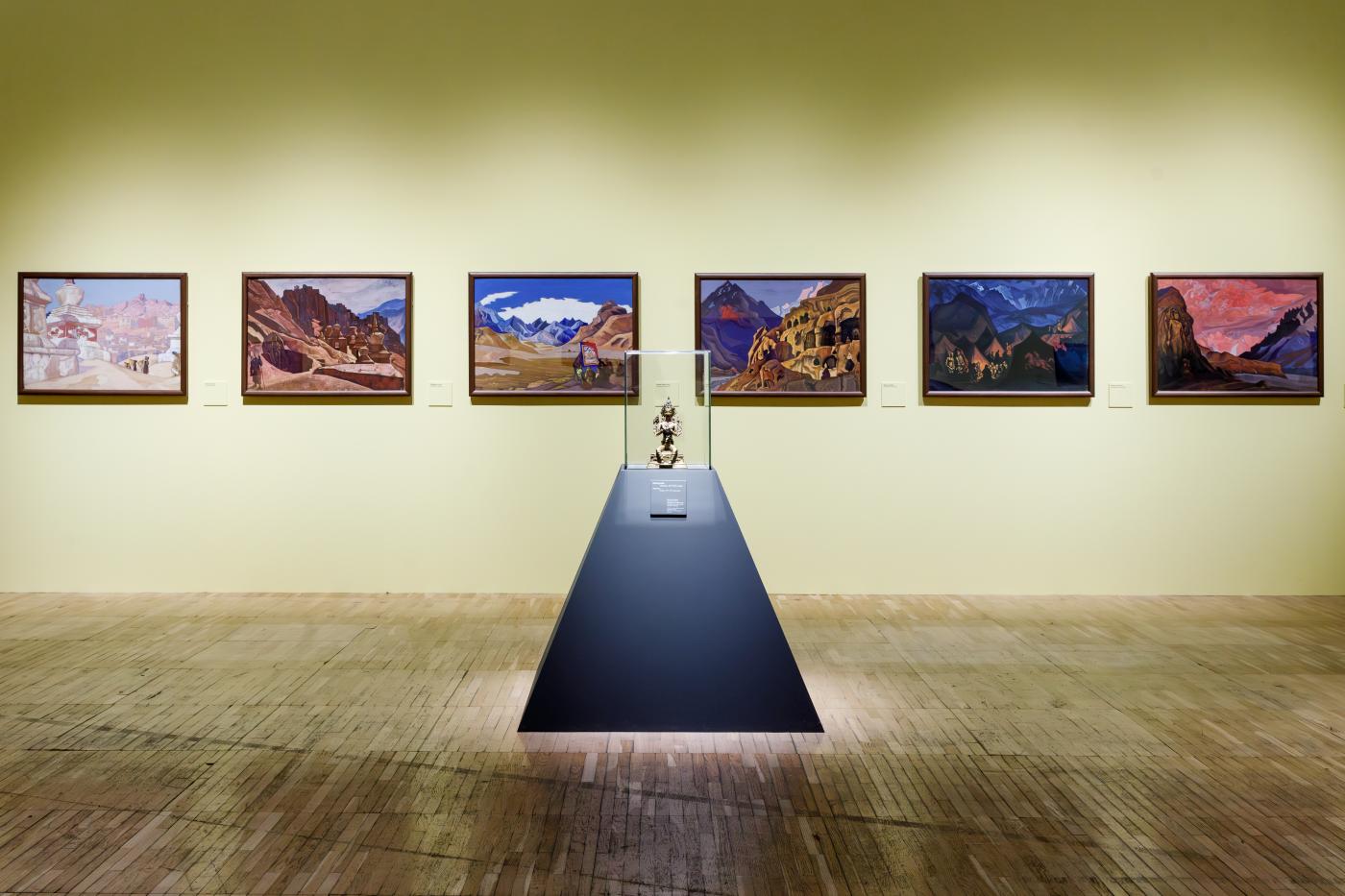 Despite extensive traveling, Roerich mastered a mind-boggling amount of work (some 7,000 paintings, drawings, and set and costume designs; nearly thirty books; and numerous lectures and articles) and seemed inexhaustible in taking on ever more responsibilities in art societies and academies. One of his major accomplishments was the Roerich Pact, a pan-American treaty that prioritizes the protection of culture over military necessities. The U.S. and twenty nations of the Pan-American Union signed it at the White House in 1935. This pact testifies to how far Roerich was ahead of his time. He thought about the planet as a whole and believed in the unity of all cultures, civilizations, and artists. As this sense of unity has perished, a reminder of Roerich’s vision seems timely.
Despite extensive traveling, Roerich mastered a mind-boggling amount of work (some 7,000 paintings, drawings, and set and costume designs; nearly thirty books; and numerous lectures and articles) and seemed inexhaustible in taking on ever more responsibilities in art societies and academies. One of his major accomplishments was the Roerich Pact, a pan-American treaty that prioritizes the protection of culture over military necessities. The U.S. and twenty nations of the Pan-American Union signed it at the White House in 1935. This pact testifies to how far Roerich was ahead of his time. He thought about the planet as a whole and believed in the unity of all cultures, civilizations, and artists. As this sense of unity has perished, a reminder of Roerich’s vision seems timely.
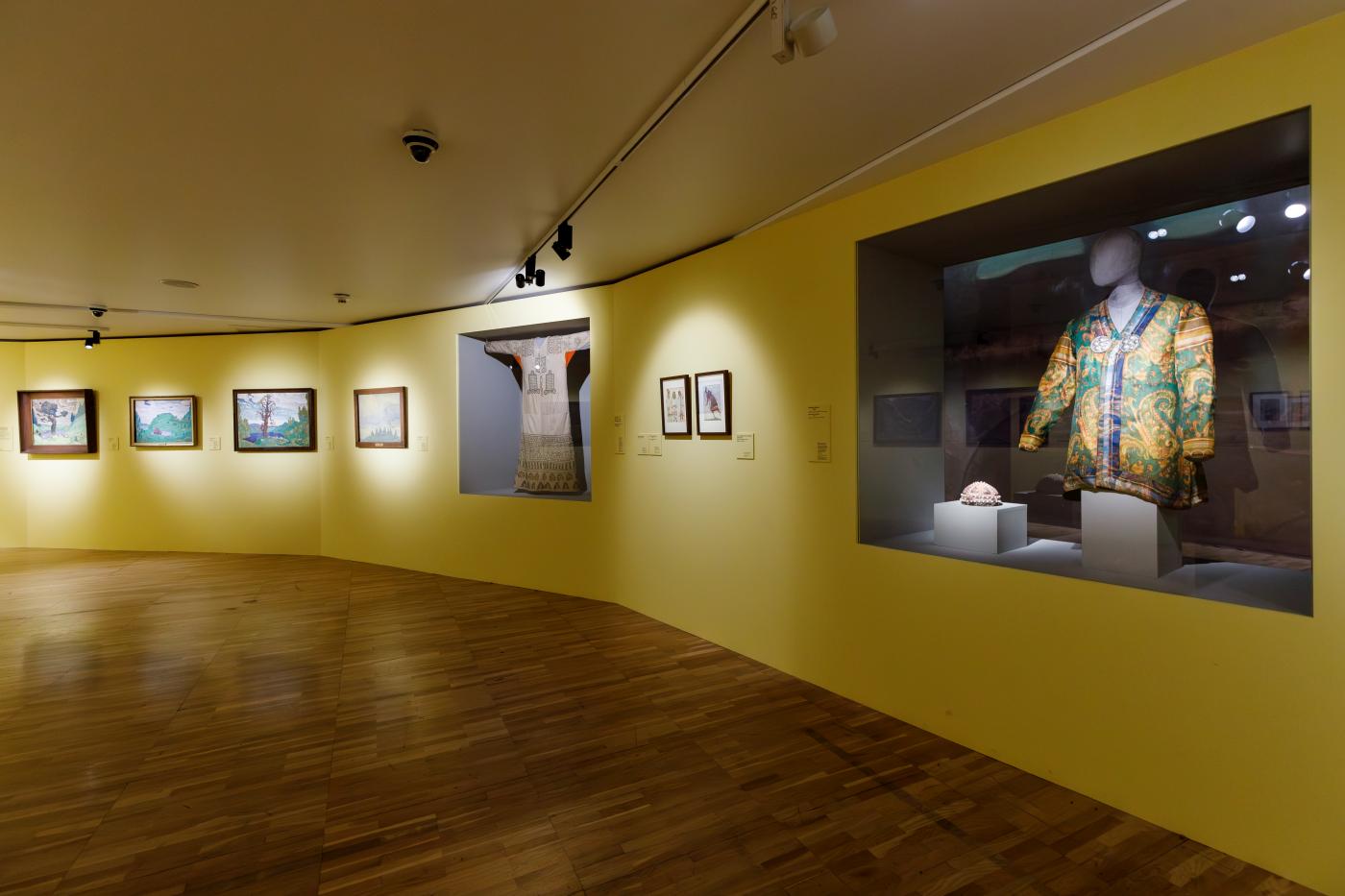
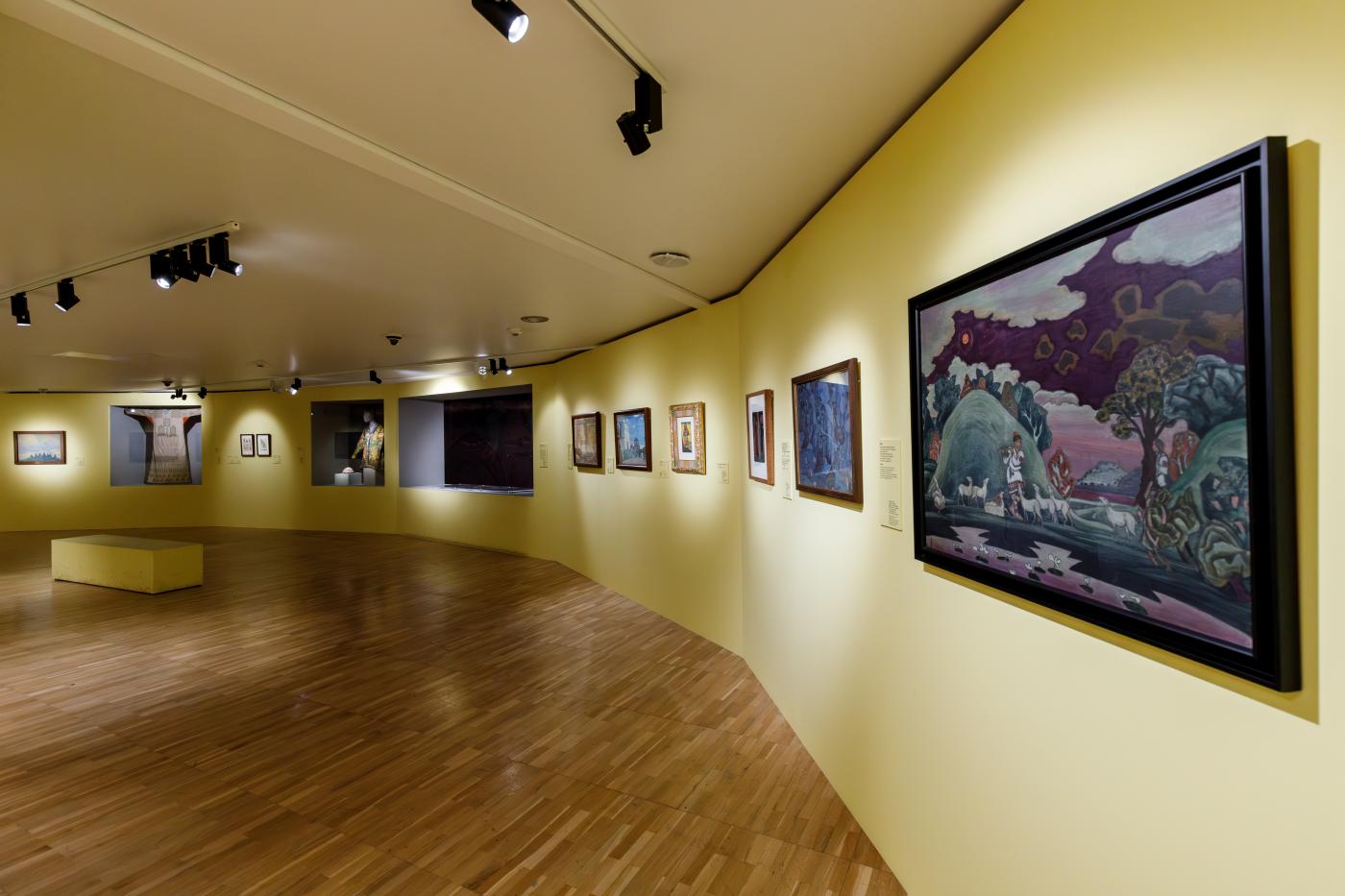 Whereas his contemporaries Benois, Bakst, Somov, and others likened beauty to the ornate elegance and refinement of Baroque art, Roerich favored the primeval purity of the prehistoric past. For him, the Stone Age was the golden age of mankind when man and nature were in harmony and work and art were one. The more than one hundred paintings, drawings, and objects displayed at the Tretyakov Gallery exemplify Roerich’s sense of beauty.
Whereas his contemporaries Benois, Bakst, Somov, and others likened beauty to the ornate elegance and refinement of Baroque art, Roerich favored the primeval purity of the prehistoric past. For him, the Stone Age was the golden age of mankind when man and nature were in harmony and work and art were one. The more than one hundred paintings, drawings, and objects displayed at the Tretyakov Gallery exemplify Roerich’s sense of beauty.
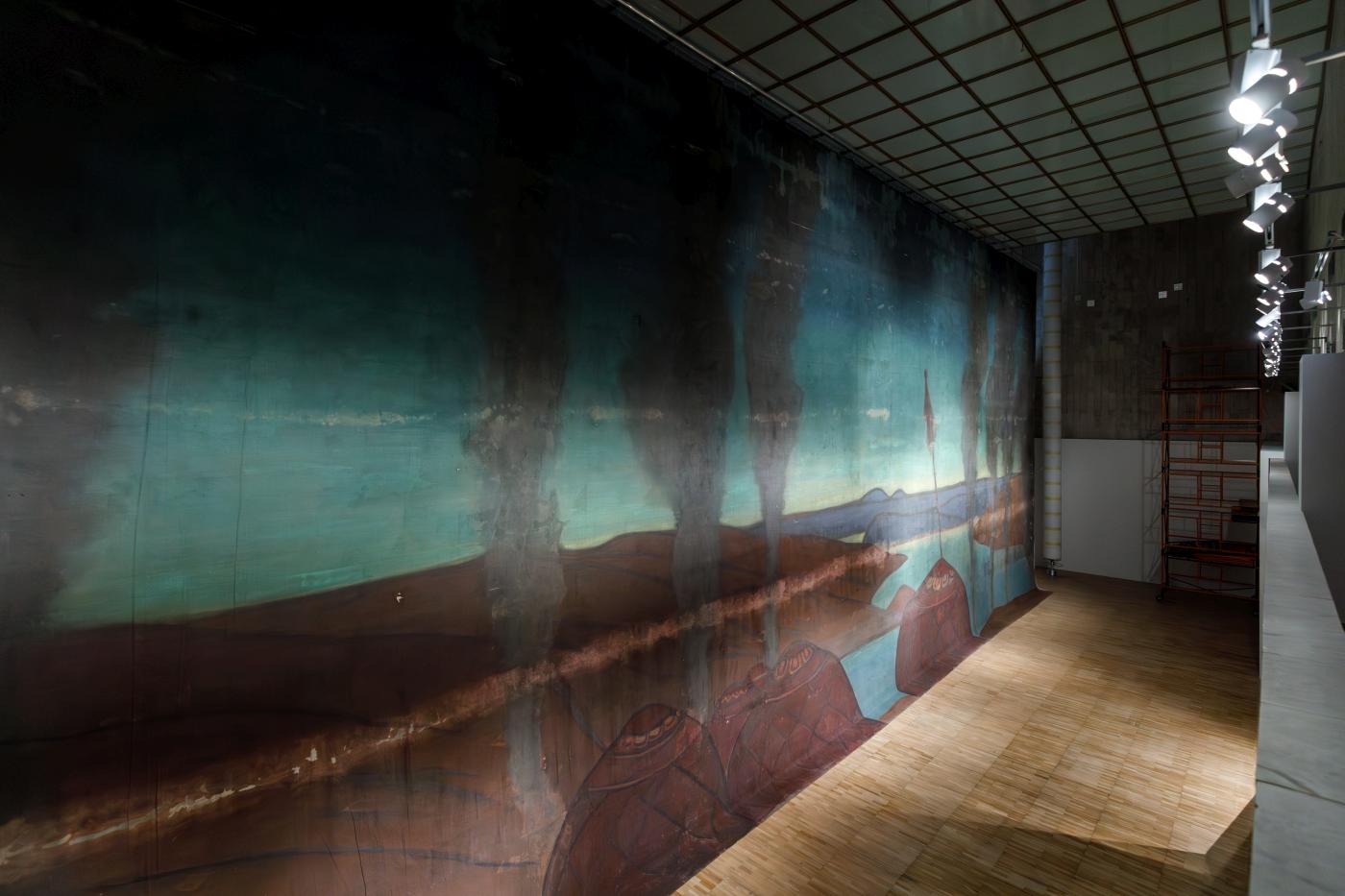 The three-part exhibition combines artworks from his Russian period (among them, for example, the monumental Bogatyr Frieze, which Roerich dedicated to his favorite heroes of Russian folklore), works originating from his time in Asia, such as the famous Himalaya paintings, and designs created for the theater. Sketches for The Three Magi, a re-creation of a medieval liturgical drama that marked Roerich’s 1907 debut as a stage designer, are displayed next to the unanimously acclaimed sets and costumes that he created for the Stanislavsky Theatre’s production of Ibsen’s Peer Gynt in 1912. The set and costume designs for Wagner’s Tristan and Isolde are from the same year but were never realized due to the outbreak of WWI. The main piece of the exhibition is the newly restored backdrop that Roerich designed for Fokine’s Polovtsian Dances. Although its once brilliant colors have faded, it still recalls memories of the Ballets Russes’s phenomenally successful 1909 Paris tour. My personal favorites were the designs for Nijinsky’s The Rite of Spring, which made me immediately think of the furor that the ballet unleashed at its 1913 premiere. It was a turning point in the history of ballet to which Roerich contributed considerably.
The three-part exhibition combines artworks from his Russian period (among them, for example, the monumental Bogatyr Frieze, which Roerich dedicated to his favorite heroes of Russian folklore), works originating from his time in Asia, such as the famous Himalaya paintings, and designs created for the theater. Sketches for The Three Magi, a re-creation of a medieval liturgical drama that marked Roerich’s 1907 debut as a stage designer, are displayed next to the unanimously acclaimed sets and costumes that he created for the Stanislavsky Theatre’s production of Ibsen’s Peer Gynt in 1912. The set and costume designs for Wagner’s Tristan and Isolde are from the same year but were never realized due to the outbreak of WWI. The main piece of the exhibition is the newly restored backdrop that Roerich designed for Fokine’s Polovtsian Dances. Although its once brilliant colors have faded, it still recalls memories of the Ballets Russes’s phenomenally successful 1909 Paris tour. My personal favorites were the designs for Nijinsky’s The Rite of Spring, which made me immediately think of the furor that the ballet unleashed at its 1913 premiere. It was a turning point in the history of ballet to which Roerich contributed considerably.
“Nicholas Roerich” runs until March 10, 2024, at the New Tretyakov Gallery, Krymsky Val, 10, Moscow.

| Links: | Website of the Tretyakov Gallery | |
| Photos: | 1. | “Nicholas Roerich” exhibition, right: The Messenger: Tribe Has Risen Against Tribe, New Tretyakov Gallery 2023 |
| 2. | “Nicholas Roerich” exhibition, New Tretyakov Gallery 2023 | |
| 3. | “Nicholas Roerich” exhibition, Bogatyr Frieze, New Tretyakov Gallery 2023 | |
| 4. | “Nicholas Roerich” exhibition, Bogatyr Frieze, New Tretyakov Gallery 2023 | |
| 5. | “Nicholas Roerich” exhibition, New Tretyakov Gallery 2023 | |
| 6. | “Nicholas Roerich” exhibition, New Tretyakov Gallery 2023 | |
| 7. | “Nicholas Roerich” exhibition, costumes and sketches for The Rite of Spring, New Tretyakov Gallery 2023 | |
| 8. | “Nicholas Roerich” exhibition, theater designs, New Tretyakov Gallery 2023 | |
| 9. | “Nicholas Roerich” exhibition, backdrop for Polovtsian Dances, New Tretyakov Gallery 2023 | |
| 10. | “Nicholas Roerich” exhibition, Banner of Peace – symbol of the Roerich Pact, New Tretyakov Gallery 2023 | |
| all photos © Ivan Novikov-Dvinsky / Tretyakov Gallery | ||
| Editing: | Kayla Kauffman |
